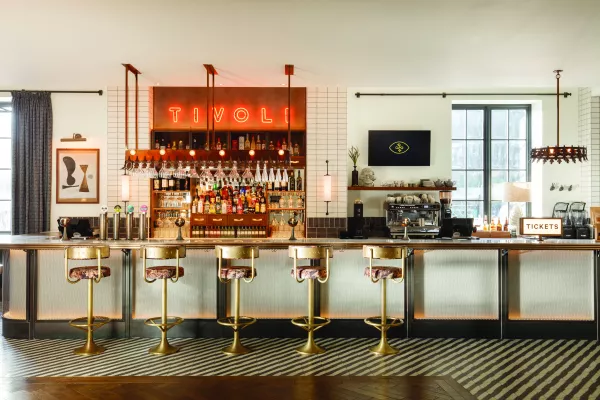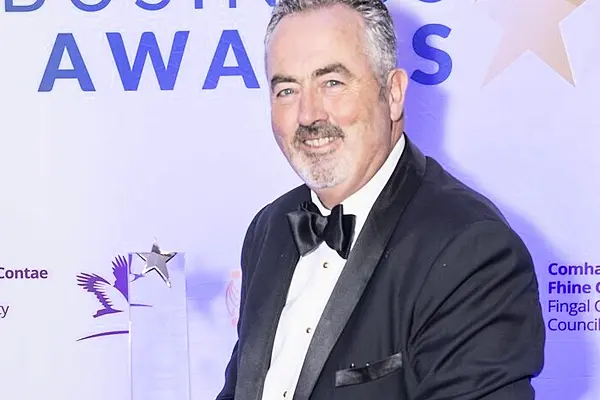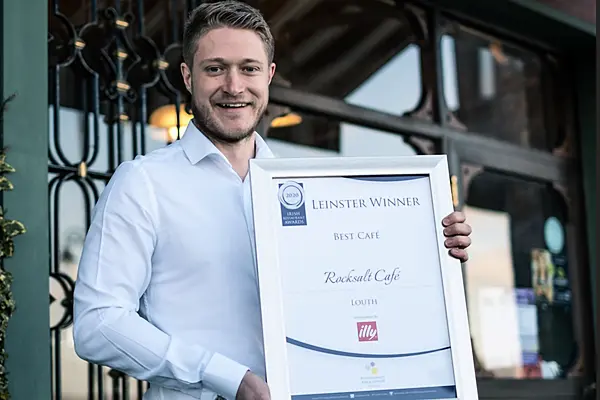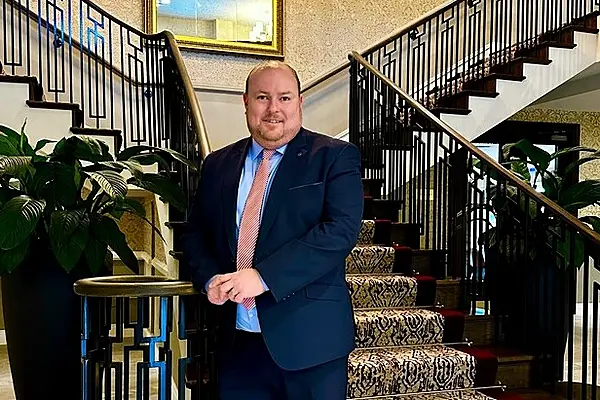As the industry emerges in a post-pandemic world, we look at some of the ways in which design can help the transition by talking to Anna Burles, agency creative director and co-founder of Run for the Hills, an award-winning design agency specialising in hospitality projects.
This article was originally published in the Summer 2021 issue of Hospitality Ireland Magazine, in July of 2021.
The first tentative steps towards ‘normal’ have been taken, but the memory of the pandemic is still fresh in all our minds. How is this affecting the way we socialise?
“People are super-conscious of crowds,” Anna Burles rightly points out, adding, “and the al-fresco spot in a barrestaurant – if designed nicely, and with heaters and other comforting touches – will remain really popular, even though venues are now fully open inside. Venues are nicer when a little less packed, and I think people will want that, going forward, so it’s our job as designers to find ways to create pockets and zones and space for customers, whilst still delivering a really good number of covers for the business model.”
In what ways can design be of benefit to hospitality owners in a more virus-aware era?
“Good design is essential and always has been – pre-, during and post-pandemic. You can have good food and fair service, but if the design is poor, the layout unwelcoming, the furniture uncomfortable, the lighting unattractive, the acoustics screechy, you’ll only attract a certain kind of customer. The perfect venue needs great food, great service, and good design in all its facets to promote repeat visits, word of mouth, and a great vibe, which is infectious for people. Eating and drinking out is an experience, and customers are designsavvy these days. They want what they can’t or don’t have at home. They want venues to be exciting, interesting and comforting, and it needn’t cost the earth. Good designers find ways to achieve a look that looks far more expensive than it was, delivering a clever design for a sensible budget, and guiding the contractor, to ensure things are well planned from the outset.”
How has the last year been for your own business?
“As a hospitality design specialist studio, we were affected deeply by the initial lockdown, as our client base of bar, restaurant and cinema clients were hit really hard. So, the first few months of lockdown were a roller-coaster. We kept in close contact with all of our clients, and we supported each other through the shockwave, as we were all in it together. All of us adapted quickly to the situation, protecting the business and our teams, putting systems and efficiencies in place to ride the storm, and looking for ways to diversify, which we did by increasing our work in residential interiors whilst continuing to support our hospitality clients, as they developed takeaway offerings, experimented with product design, and created those amazing at-home dining kits we all loved during lockdown.
“We also utilised the furlough scheme for a few months, but managed to get the full team back by August to start rebuilding things. In truth, we’re still not back to full pre-pandemic times, but, in some ways, we don’t necessarily want to go back to how things were. We’re leaner and more streamlined and wiser as a business, and lots of the changes we put in place in those early days we’ll keep in place, as they’ve made us and the team stronger. Things are really positive, and we’re getting lots of enquiries, which shows that confidence is coming back. We’re also on the hunt for a new studio. We’re also delighted for our hospitality clients to be able to open fully again!”

Kitchen at Scarlett Green, Soho
When did you first know that you wanted to work in design and interiors?
“I was working in a guerrilla marketing agency, concepting pop-up installations, projecting things onto buildings, and creating street art-style sculptures for fashion and sports brands. Over time, some of those brands came to me and asked me to come up with a concept to style their fashion events and launch parties, which I loved doing, but I wasn’t qualified as a professional interior designer, so I decided to retrain in interiors at KLC School of Design at the ripe old age of 37. It was a big gamble and very full on, studying alongside full-time work, but it was the best decision I ever made.”
How did you initially get into the industry?
“My first commission as a freelance interior designer was to design a London advertising agency, and then I was lucky enough to design an apartment for the singer Ellie Goulding, but my first hospitality commission was to design a coffee shop and restaurant in Russia. It was around that time that we founded Run for the Hills, merging my husband and business partner’s graphic-design practice with my freelance interior design work, fusing branding and interiors. Soon after, we won our first London restaurant commission – to design Kricket in Soho – and have since gone on to design their Brixton and White City venues, as well as designing their menus, signage, website and cookbook.”
What do you find exciting about designing for the hospitality industry?
“We love the challenge of the brief, to chart new waters, and to bring a brand to life, spatially. I also love the design drama that you’re allowed to inject into hospitality spaces. There’s an element of escapism and otherness about them, and, on a personal level, I love the freedom clients give us, to really let our creativity run riot. You can be more avant-garde with your ideas in a commercial setting than in a residential one, although we’re lucky to have brave and artistic residential clients who actively seek us out, to give them something different to the norm.”
What are the main challenges of designing for the hospitality industry?
“Timings and budgets are always a challenge. Clients might take on a new space, and suddenly the rent-free period is ticking away, and the design needs to be created quickly and tendered superfast, which can be a huge challenge. Because good design isn’t always superfast and good-value design also isn’t always super-fast, spending time to find the right partners, suppliers and products at the right prices takes time. Likewise, where budgets are constrained, coming up with creative and costeffective solutions can also take more time than when you have the luxury of extra budget. So, it’s always a juggling act and a compromise to find the balance between what we want in terms of creating a great, well-thought-through design and what the business needs.”

Tivoli, Bath
What is the most important thing to keep in mind while designing for this industry?
“To make sure you’re designing not just for the customer, but for the staff and business, too. How will the team clear things, store things, get supplies into the space, do what they need to do easily, so they can focus on great service? How will the design help the business succeed and make money? Our designs can’t just look good. They need to work really hard for our clients.
“Creatively, the challenge of designing for hospitality is also the most exciting bit: staying ahead of trends, looking for new ways to create experiences, finding ways to do things really well, but in sensible ways, in terms of budget and timings, learning about ways we can design more sustainably, whether that’s using more eco-friendly materials or using different processes, or reusing elements from a previous fit-out, rather than scrapping everything into landfill.”
Are there requirements around materials or finishes of which you need to be aware?
“Yes. There are lots of standards you and your designers need to apply to materials and finishes in a commercial setting to ensure compliance: fire ratings and Crib 5 testing for fabrics and furniture, slip ratings for tiles, loadings, rubs and abrasions for longevity, acoustic considerations – to name just a few.”
On what hospitality projects are you currently working?
“We have just wrapped on the design of a gorgeous cocktail bar and restaurant in West London, called Bondi Green. The venue looks amazing, and it’s now fully open! There is also a rooftop terrace bar we’ve designed with them, which will open a bit later this summer. We are also proud to be launching the branding and interior design of Khai Khai, a really innovative new Indian comfort food restaurant and bar in Newcastle, from the multi-talented Dabbawal operator Jaf Ali. We are also picking up again with all of our longtime hospitality clients on their new initiatives for new venues.
“We’re also launching a new, entry-level diffusion service called Miscellany – https://www.miscellany.london/ – offering ready-to-go design packages and a bite-sized interiors consultancy, for clients who might not ordinarily use an interior designer and rely on their contractor. The service is initially aimed at residential interior clients, but we are working on a hospitality angle, too.”
What are the first things that you plan to do, now that lockdown is lifting?
“On a personal level, we’re looking forward to being able to go out and eat in our favourite restaurants. We’ve missed it so much. We also can’t wait to go and see a movie on the big screen, and the interior designer in me can’t wait to start being able to browse the vintage markets again – online sourcing just isn’t as exciting, a bit like a Zoom meeting isn’t as good as seeing people face to face.
Read More: Hospitality Ireland Summer 2021: Read The Latest Issue Online!








